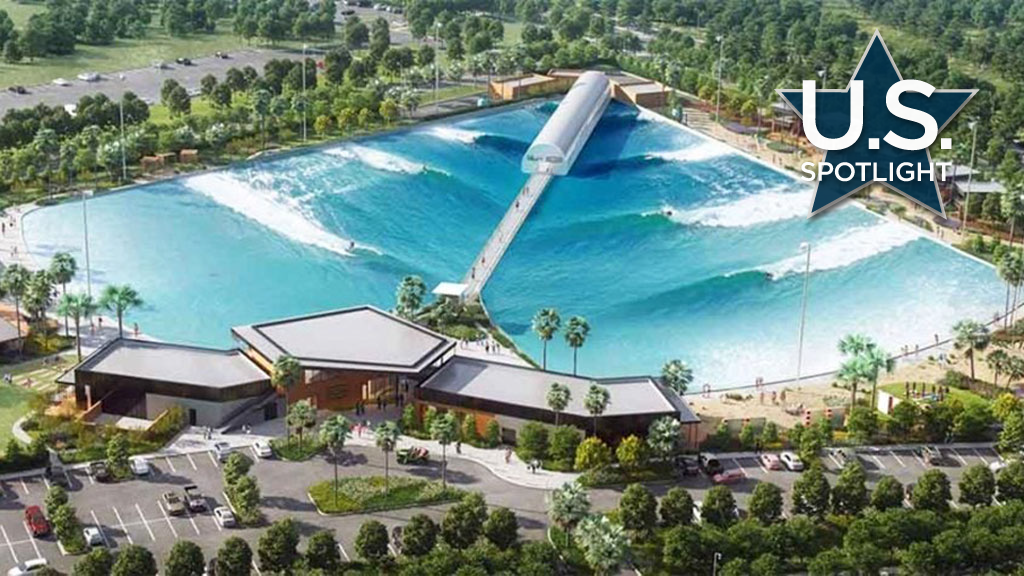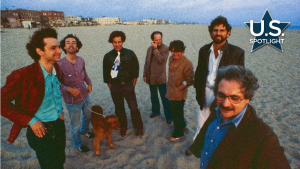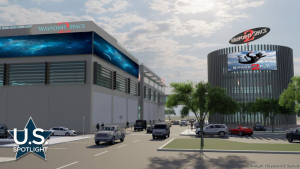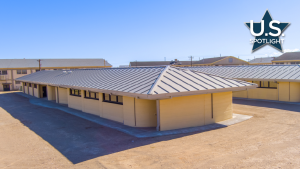When the sun beats down on Texas, residents in the Houston and Austin areas will soon be able to enjoy a day at the beach and perhaps even catch some waves.
Major waterpark developments have been announced in the past six months, representing billions of construction dollars and hundreds of jobs for the next several years.
Three of the waterpark developments are slated for the Houston area.
Vacation operator Great Wolf Resorts will add Houston to its list of nearly 20 destinations across North America, including a Great Wolf Lodge currently operating in Grapevine, north-west of Dallas. The indoor water park planned for Houston will be massive, covering nearly 100,000 square feet, and will include slides, raft rides, activity pools and splash areas.
Great Wolf purchased a 30-acre site in the City of Webster, a suburb south-east of Houston, in December 2021. Webster committed millions of dollars in various tax incentives and infrastructure construction for the development, plus hotel occupancy tax and sales tax grants. In return, Great Wolf agreed to create at least 350 jobs during the first year of construction which began last fall and provide the city with hotel rate discounts and free meeting space annually. Construction is expected to be completed by late 2024.
The resort will anchor a planned 120-acre destination development called Flyway, a collaboration between Houston-based Medistar and the Webster Economic Development Corporation (WEDC).
The concept is to “fuse the indoors with the outdoors with best-in-class dining and entertainment venues amid a walkable, inviting atmosphere with a boardwalk, event lawn, and unique amenities,” according to the WEDC website.
Webster Mayor Donna Rogers was enthusiastic about the economic potential offered by the Great Wolf development, telling local media, “I’ve been in public service for 27 years, and this is by far the biggest thing that’s ever happened in Webster. The economic stability that it’s going to bring and the jobs that it’s going to bring are phenomenal.”
Meanwhile, on the west side of Houston in Katy, there’s a planned $4 million expansion at the Typhoon Texas waterpark, owned and operated by the Pyek Group. The children’s’ play area will increase by 30,000 square feet with the addition of more slides, an 800-gallon water bucket, an upgraded splash pad and rentable cabanas.
To the northwest, only 10 minutes from Bush International Airport, construction is about to begin on a manmade surfing facility at the 4,200-acre master planned community of Generation Park, offering customizable waves similar to those seen in oceans.
It’s the latest creation from California-based Beach Street Development, a company with a background in surf technology as well as real estate development and surf basin operations.
“HTX Surf will cater to surf pros and amateurs alike,” Generation Park said in a media release. “Creating up to 1,000 waves per hour, the surf experience can be tailored to different skill levels. The six-acre manmade surf lagoon can accommodate up to 70 surfers per hour and allows beginner and advanced surfers to simultaneously surf in different areas of the lagoon.”
Visitors can enjoy a large beach for relaxing and spectating, as well as lessons and training for all skill levels.
Yet, these major waterpark initiatives near Houston are dwarfed by plans to build what could be the largest surf park development in the world.
Surf Lakes Holdings Ltd, a public company established in 2016, announced in October it will invest $1.3 billion in a 400-acre “high adventure community” with a surf park as its hub, located only 20 minutes south of downtown Houston near the city’s international airport.
The company said Pura Vida will feature a 12-acre lake surrounded by sandy beaches, boardwalks restaurants and hotels. Construction could begin by mid-2023. Other high adventure additions will be announced soon, the company promised.
Pura Vida is not without controversy, however.
Austin spans Travis, Hays and Williamson counties, identified by the U.S. Drought Monitor as adjacent “moderate” to “extreme drought” areas. It’s not entirely clear where Pura Vida will source its water requirements, although there is speculation that processed recycled water could be used, not drinking water.
Big sun and big surf. California dreamin’ is becoming a Texas reality.











Recent Comments